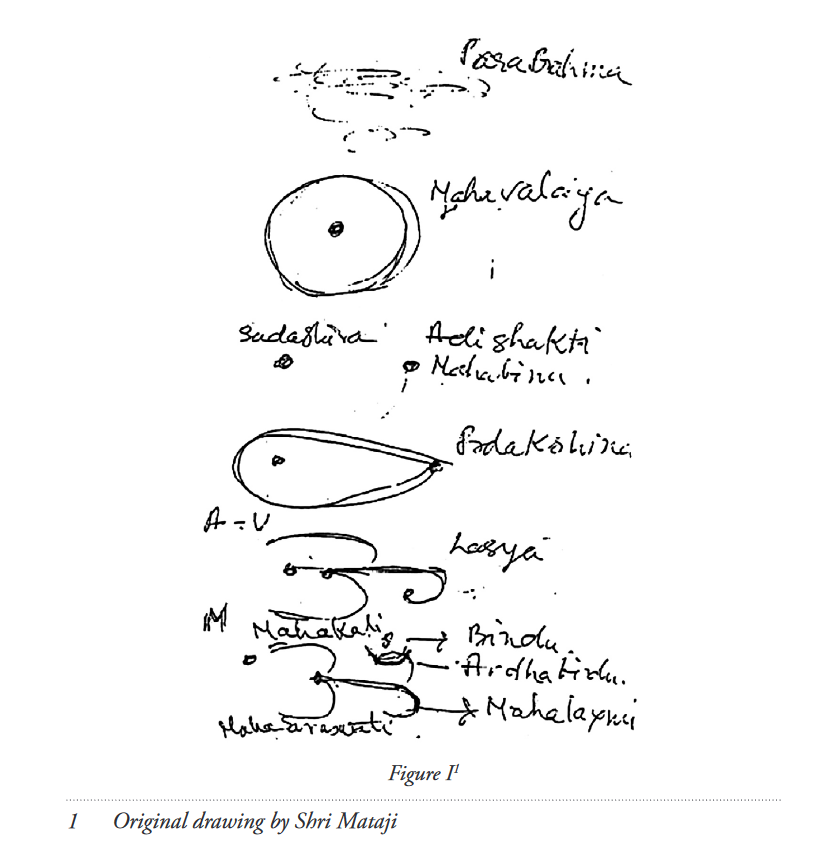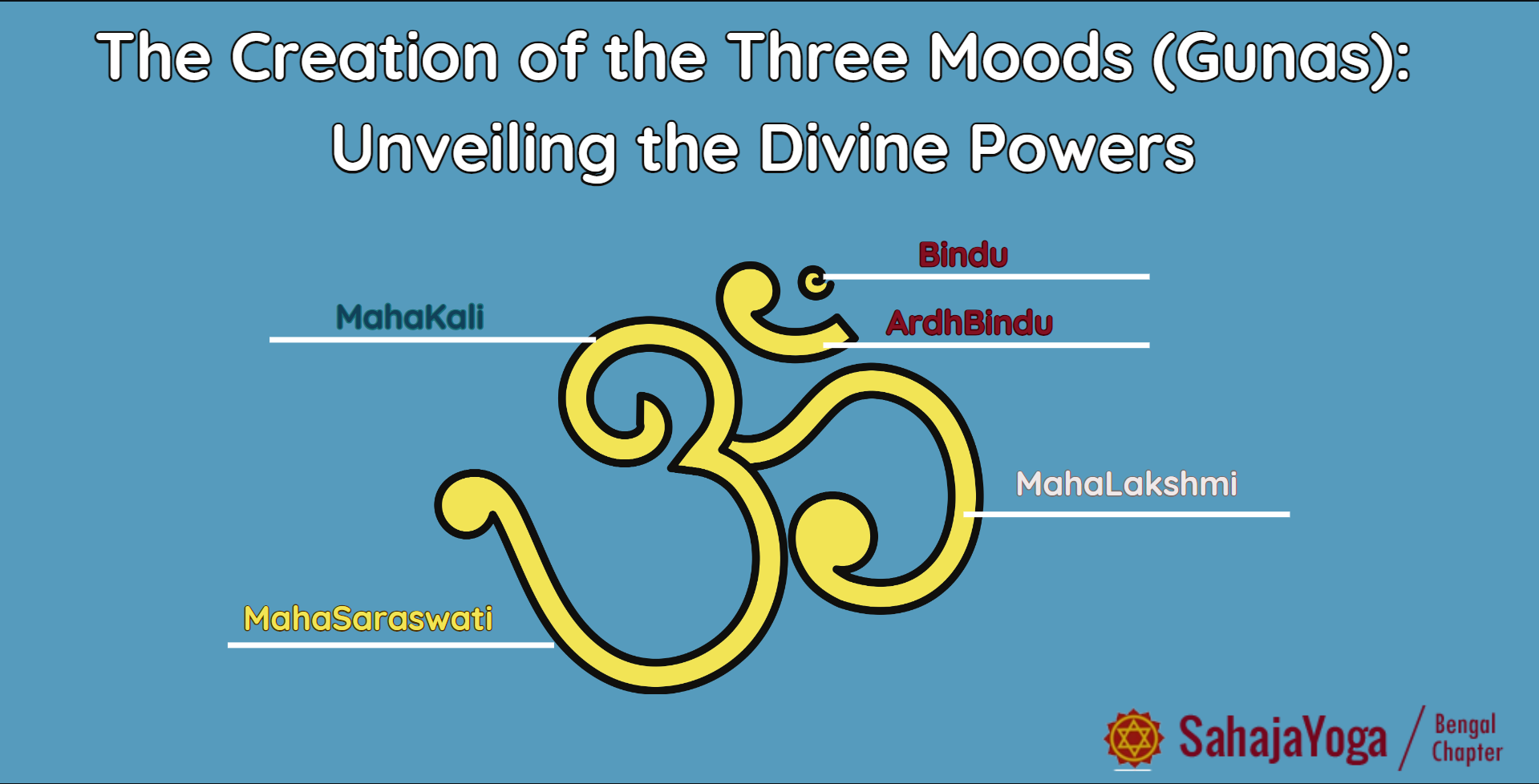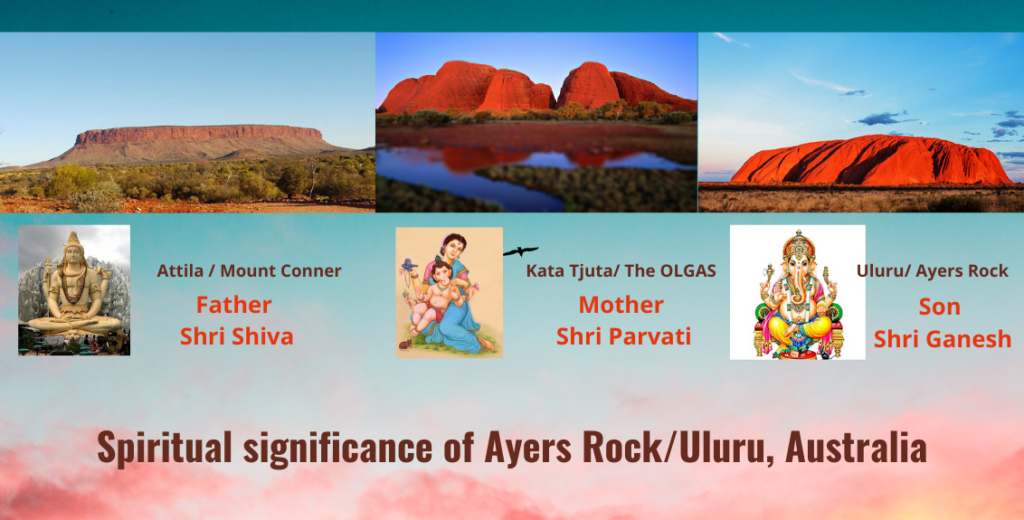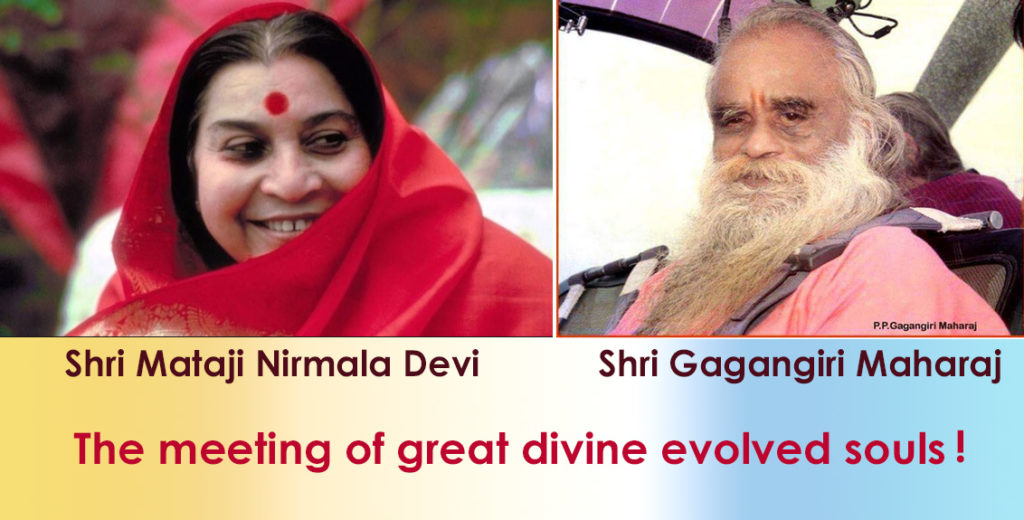The Creation of the Three Moods (Gunas): Unveiling the Divine Powers
Introduction:
Within the sacred syllable ‘Aum’ lies a profound symbolism that reveals the creation and the existence of the three fundamental moods or qualities known as Gunas. Represented by the three-and-a-half coils of the Devanagari script, this ancient knowledge sheds light on the divine forces that govern our universe. Through the elliptical movements of ‘AA,’ ‘OO,’ and ‘MA,’ the primal energy, Adi Shakti, initiates, activates, and expresses her love for creation, giving rise to the Gunas of desire, activation, and revelation, respectively. Let us delve deeper into this mystical understanding and explore the integrated powers of Mahakali, Mahasaraswati, and Mahalakshmi as expressions of the Gunas.
The Primordial Elliptical Movements:
The first elliptical movement of ‘AA’ represents the initial desire of Adi Shakti to manifest the creation. It is the spark that ignites the process of existence. The second movement of ‘OO’ symbolizes the activation of creative energy, propelling the creation into motion. As the third movement of ‘MA’ unfolds, Adi Shakti reveals her boundless love for the creation, embracing it as her own child. These three elliptical movements intertwine, creating a fan-like pattern that rotates and bends in a complete circle of three-hundred-and-sixty degrees.

The Three Gunas:
Through the dance of these elliptical movements, the Gunas manifest. Tamo Guna, the mood of desiring, emerges as the result of the first movement. It represents inertia, darkness, and the potential for transformation. Rajo Guna, the activating mood, arises from the second movement, symbolizing action, dynamism, and passion. Lastly, Sattwa Guna, the revelatory mood, manifests through the third movement, embodying purity, enlightenment, and harmony. These Gunas form the foundational qualities that influence the diversity of human temperaments and characteristics.
The Integrated Powers of Adi Shakti:
While the three Gunas are distinct, they are intricately interwoven, forming the expression of the three powers of God Almighty: Mahakali, Mahasaraswati, and Mahalakshmi. Mahakali represents the fierce and transformative power that corresponds to Tamo Guna. Mahasaraswati embodies the creative and intellectual energy associated with Rajo Guna. Mahalakshmi encompasses the nurturing and harmonious qualities of Sattwa Guna. Despite their individual expressions, these powers remain seamlessly integrated, unified as Adi Shakti, the primal energy from which all creation emanates.
Conclusion:
The symbolism contained within the three-and-a-half coils of the ‘Aum’ syllable unveils the creation of the three Gunas and the divine powers that govern them. The elliptical movements of ‘AA,’ ‘OO,’ and ‘MA’ give rise to the moods of desiring, activating, and revealing. Through these Gunas, the diverse fabric of human temperament and character is woven. Mahakali, Mahasaraswati, and Mahalakshmi represent the integrated powers of God Almighty, expressing themselves as the three Gunas. In contemplating these profound teachings, we gain a deeper understanding of the intricate tapestry of existence and the divine forces that shape our world.




